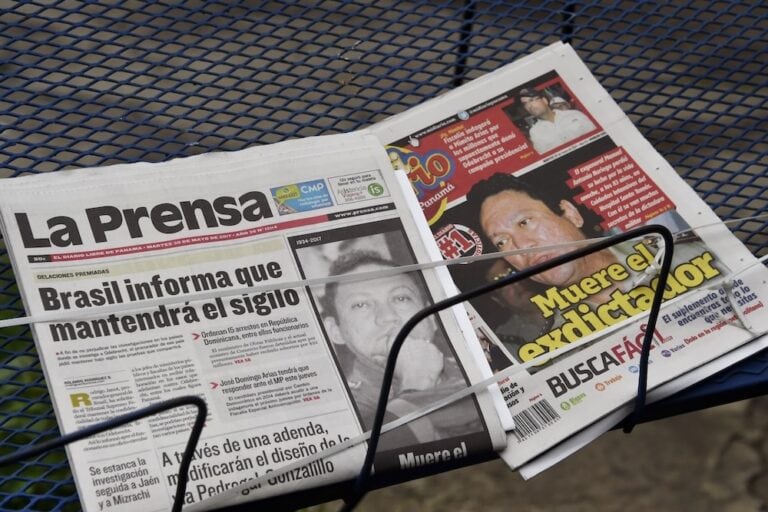(CPJ/IFEX) – On 28 July 1999, two days after withdrawing a proposed amendment to the 1978 gag law in the face of national and international criticism, the Panamanian Cabinet approved an only slightly different amendment to the law. As a 30 July editorial of the Panama City-based daily “La Prensa” put it, this new bill […]
(CPJ/IFEX) – On 28 July 1999, two days after withdrawing a proposed
amendment to the 1978 gag law in the face of national and international
criticism, the Panamanian Cabinet approved an only slightly different
amendment to the law. As a 30 July editorial of the Panama City-based daily
“La Prensa” put it, this new bill amounts to “the same injection with a
different needle.”
The government’s new proposal is expected to reach the Legislative Assembly
early this week. It is better than the first proposal in some respects, but
worse in others.
The first bill gave justices of the peace power to sanction journalists who
publish information on someone’s private life or physical handicap. The new
bill gives this power to family court judges instead. This should ensure
more judicial independence, because unlike justices of the peace, family
court judges don’t come under the authority of the civil administration. The
new bill also
eliminates prison as a sanction for disseminating such information.
But both versions raise the maximum fine from US$2,500 to US$10,000. And in
the new bill, each repeat offence would earn a progressively doubled fine.
Where the old bill imposed a US$1,000 maximum fine on media outlets that
fail to give space to people who disagree with how they have been covered
(this is known as the “Right to Reply”), the new bill raises this fine to
US$5,000.
CPJ is troubled by the government’s seemingly ill-intentioned attempts to
keep the Panamanian press gagged. They urge the government to withdraw this
latest proposal immediately, and to work for the comprehensive repeal of the
gag law.


